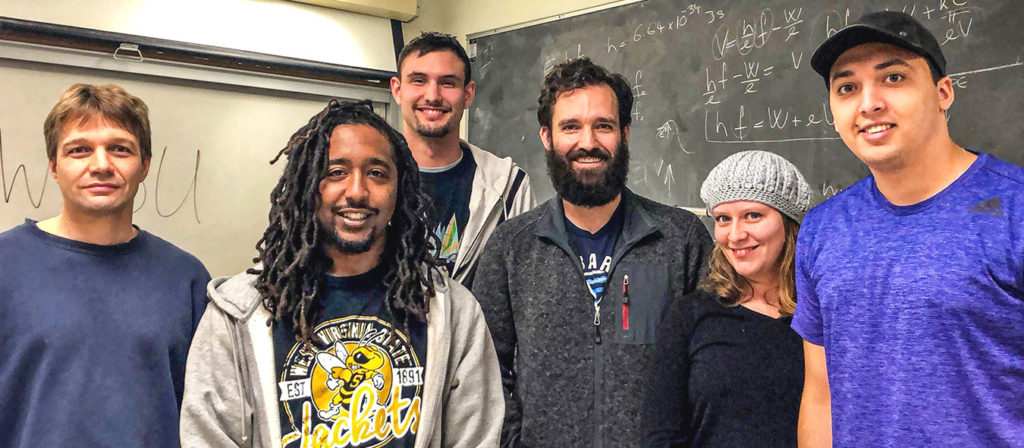West Virginia State University (WVSU) students participated in the successful launch of a NASA suborbital rocket at the NASA Wallops Flight Facility on Wallops Island, Virginia, on August 12.
Five WVSU students under the supervision of WVSU Physics Professor Dr. Marek Krasnansky designed experiments that were launched into space as part of the RockSat-X program, which allows students to build their own experimental payloads and launch them on a NASA rocket.
The WVSU students participating were Jonathan Musselwhite, Taylor Jones-Martin, Shaka Wilkerson, Oddai Gharib, and Elizabeth Carrier.
The students started their work in August 2018 by creating a conceptual design of their experiments before making prototypes and testing them. Four of the students, Musselwhite, Jones-Martin, Wilkerson and Gharib received NASA West Virginia Space Grant Consortium scholarships and presented their experiment designs at the WVSU College of Natural Sciences and Mathematics Annual Research Symposium in spring 2019.
The payload containing the students’ experiments was launched on a Terrier-Improved Malemute rocket from the Wallops Flight Facility Aug. 12, 2019, at 5:44 a.m. The rocket reached an altitude of 96 miles before splashing down into the Atlantic Ocean. The payload was successfully recovered, and the data acquired during the flight will be evaluated in the coming weeks.
Seven projects, some including multiple experiments, flew through the RockSat-X program in conjunction with the Colorado Space Grant Consortium. RockSat-X is the most advanced of NASA’s three-phase rocket program for students.
Participating institutions in this flight were the Arapahoe Community College, Littleton, Colorado; Community College of Aurora, Colorado; Red Rocks Community College, Lakewood, Colorado; College of the Canyons, Santa Clarita, California; the University of Puerto Rico, San Juan; University of Kentucky, Lexington; University of Maryland, College Park; University of Nebraska, Lincoln; and Hobart and William Smith Colleges, Geneva, New York.
Additional participants from West Virginia included students from Blue Ridge Community and Technical College, West Virginia University, West Virginia Wesleyan College, and NASA’s IV & V Facility in Fairmont.
Originally from Jack Bailey for West Virginia State University News.
